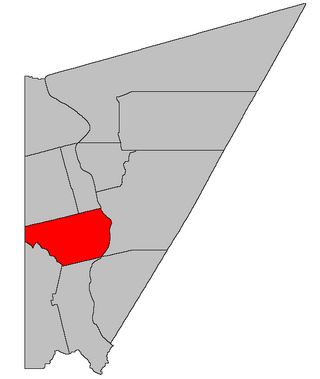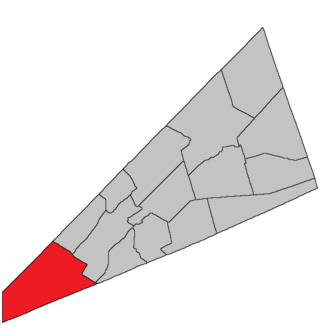Saint Stephen St. Stephen | |
|---|---|
 Location within Charlotte County. | |
| Country | |
| Province | |
| County | Charlotte County |
| Erected | 1786 |
| Area | |
| • Land | 102.83 km2 (39.70 sq mi) |
| Population (2021) [1] | |
| • Total | 1,671 |
| • Density | 16.3/km2 (42/sq mi) |
| • Change 2016-2021 | |
| • Dwellings | 772 |
| Time zone | UTC-4 (AST) |
| • Summer (DST) | UTC-3 (ADT) |
| Figures do not include portion within the town of St. Stephen | |
Saint Stephen is a geographic parish in Charlotte County, New Brunswick, Canada, [4] located in the southwestern corner of the province.
Contents
- Origin of name
- History
- Boundaries
- Evolution of boundaries
- Former governance
- Town
- Local service districts
- Former municipalities
- Communities
- Bodies of water
- Islands
- Other notable places
- Demographics
- Population
- Language
- Access Routes
- See also
- Notes
- References
- External links
For governance purposes, almost the entire parish is part of the town of the Municipal District of St. Stephen, [5] with a small area along Moores Mills Lake belonging to the Southwest rural district, [6] both of which are members of the Southwest New Brunswick Service Commission. [7]
Prior to the 2023 governance reform, it comprised one town, two local service districts (LSDs), and part of a third LSD, all of which were members of the Southwest New Brunswick Service Commission (SNBSC). [8]
The Census subdivision of the same name includes all of the parish except the town of St. Stephen. [1]



















